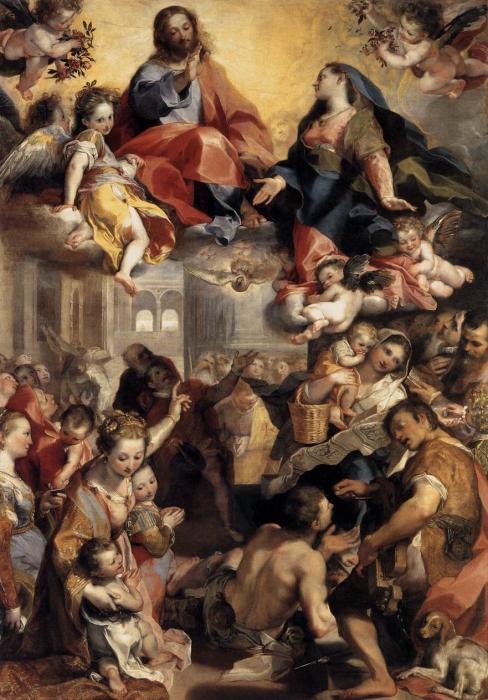Federico Barocci (1528-1612)
Get a Federico Barocci (1528-1612) Certificate of Authenticity for your painting (COA) for your Federico Barocci (1528-1612) drawing.
For all your Federico Barocci (1528-1612) artworks you need a Certificate of Authenticity (COA) in order to sell, to insure or to donate for a tax deduction.
Getting a Federico Barocci (1528-1612) Certificate of Authenticity (COA) is easy. Just send us photos and dimensions and tell us what you know about the origin or history of your Federico Barocci (1528-1612) painting or drawing.
If you want to sell your Federico Barocci (1528-1612) painting or drawing use our selling services. We offer Federico Barocci (1528-1612) selling help, selling advice, private treaty sales and full brokerage.
We have been authenticating Federico Barocci (1528-1612) and issuing certificates of authenticity since 2002. We are recognized Federico Barocci (1528-1612) experts and Federico Barocci (1528-1612) certified appraisers. We issue COAs and appraisals for all Federico Barocci (1528-1612) artworks.
Our Federico Barocci (1528-1612) paintings and drawings authentications are accepted and respected worldwide.
Each COA is backed by in-depth research and analysis authentication reports.
The Federico Barocci (1528-1612) certificates of authenticity we issue are based on solid, reliable and fully referenced art investigations, authentication research, analytical work and forensic studies.
We are available to examine your Federico Barocci (1528-1612) painting or drawing anywhere in the world.
You will generally receive your certificates of authenticity and authentication report within two weeks. Some complicated cases with difficult to research Federico Barocci (1528-1612) paintings or drawings take longer.
Our clients include Federico Barocci (1528-1612) collectors, investors, tax authorities, insurance adjusters, appraisers, valuers, auctioneers, Federal agencies and many law firms.
We perform Federico Barocci art authentication, appraisal, certificates of authenticity (COA), analysis, research, scientific tests, full art authentications. We will help you sell your Federico Barocci or we will sell it for you.
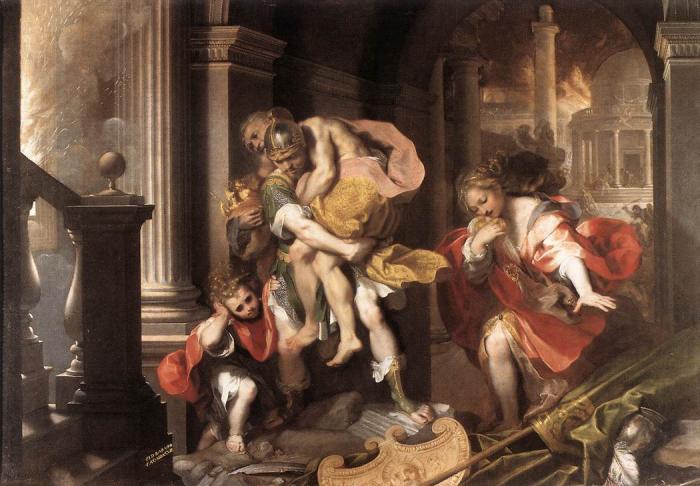
Federico Barocci was an Italian Counter-Reformation or proto-Baroque painter and printmaker. His original name was Federico Fiori, and he was nicknamed Il Baroccio, which still in northwestern Italian dialects means a two wheel cart drawn by oxen. His work fills an oft-overlooked period of art; while in his day his work was highly esteemed and influential.
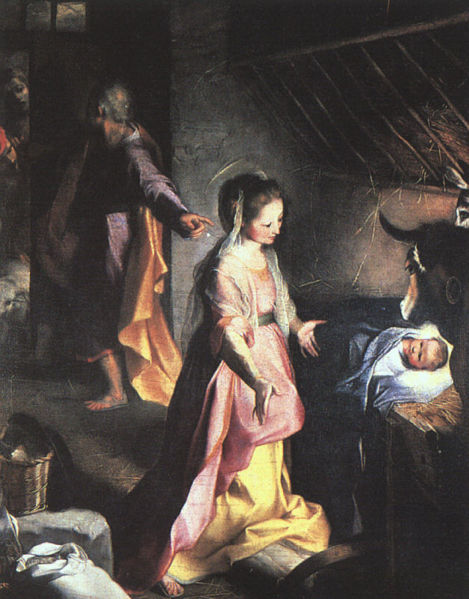
He was born at Urbino, Italy, and received his earliest apprenticeship with Battista Franco in Urbino. His early career in Rome was mentored by Taddeo Zuccari and his uncle Bartolomeo Genga. In Rome he worked alongside Federico Zuccari on more than one occasion.
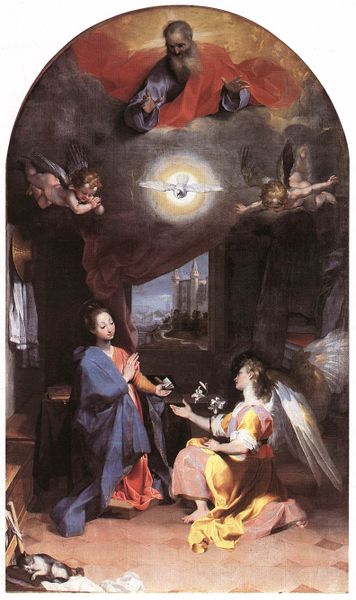
Barocci is known to have had two long stays in Rome in mid 1500s. During his second soujourn, while completing the decorations for the Vatican Casino of Pius IV, Barocci fell ill with intestinal complaints and feared he had been poisoned by jealous rivals. Fearing his illness was terminal, he left Rome in 1563; four years later he was said to experience a partial remission after prayers to the Virgin. Barrocci often complained of frail health, though he remained productive for nearly four decades more. While he is described by contemporaries as personally somewhat morose and hypochondriacal; his paintings are lively and brilliant. Barocci, while he continued to have major altarpiece commissions from afar, he never returned to Rome, and was mainly patronized in his native city by Francesco Maria II della Rovere, duke of Urbino. The Ducal Palace can be seen in the background of his paintings, rendered in a forced perspective that seems a holdover from Mannerism.
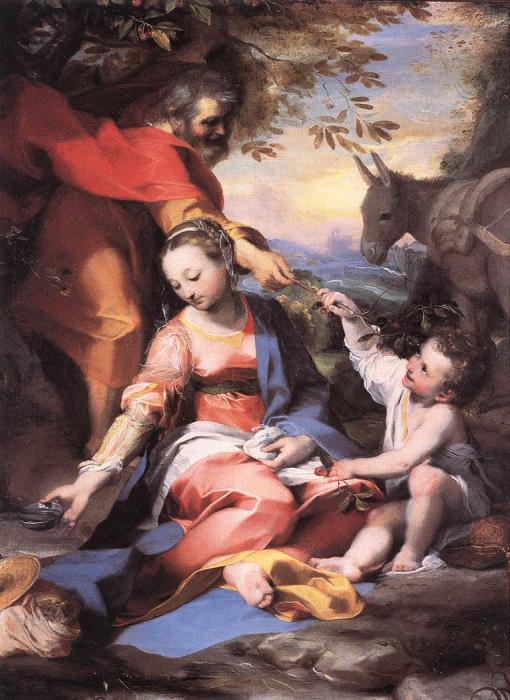
While Barocci was removed from Rome, the fulcrum of artistic fame and influence, he continued to innovate in his style. At some point he may have seen colored chalk/pastel drawings by Correggio, but Barocci’s remarkable pastel studies are the earliest examples of the technique to survive. In pastels and in oil sketches (another technique he pioneered) Barocci’s soft, opalescent renderings evoke the ethereal. Such studies were part of a complex process Barocci used to complete his altarpieces. An organized series of steps leading up to the final product ensured its speed and success in execution. Barocci did innummerable sketches: gestural, compositional, figural studies (using models), lighting studies (using clay models), perspective studies, color studies, nature studies, etc. Today, over 2,000 drawings by him are extant. Every detail of his subsequent cartoons for canvases was worked out in this way. A good example is his famed Madonna del Popolo (Uffizi). It is a vortex of color and vitality, made possible by the great variety of people, poses, perspectives, natural details, colors, lighting and atmospheric effects. There are many surviving drawings for the Madonna del Popolo, from initial sketches to color studies of heads, to the final full size cartoon. Despite this painstaking process, Barocci’s genius kept the brushstrokes passionate and liberated. More should be written about the singular radiance of the master’s painting technique, in which a spiritual light seems to flicker as a jewel across faces, hands, drapery, and sky.
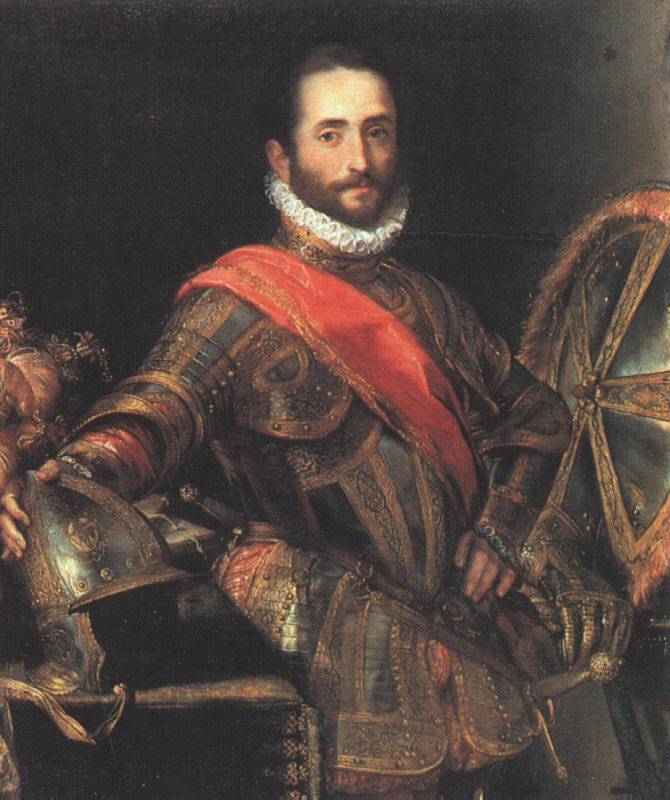
Barocci’s embrace of the Counter Reformation would shape his long and fruitful career. By 1566, he joined a lay order of Capuchins, an offshoot of Franciscans. He may have been influenced by Saint Philip Neri, whose Oratorians sought to reconnect the spiritual realm with the lives of everyday people. Neri, who was somewhat ambivalent about the accumulating richness of his Santa Maria in Vallicella, commissioned two completed works from Barocci, the pre-eminent artists of these large pious altarpieces: The Visitation (1583-6) and Presentation of the Virgin (1593-94). Neri is said to have been moved to ecstasy by Barocci’s accomplishment in the former painting, which shows the Virgin and Elizabeth greeting each other.
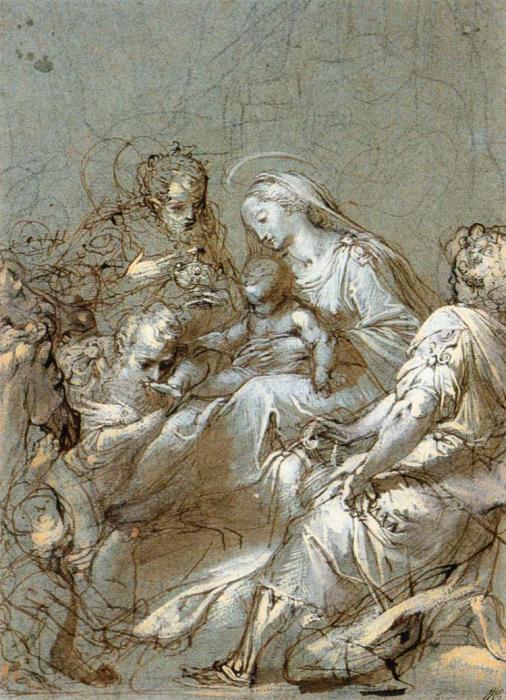
The artist biographer Giovanni Bellori, the Baroque equivalent of Giorgio Vasari, considered Barocci among the finest painters of his time. Barocci’s emotive brushwork was not lost on Peter Paul Rubens when he was in Italy. Rubens is known to have made a sketch of his dramatic Martyrdom of St Vitale, in which the martyr’s undulating flesh is the eye of another whirlwind of figures, gestures, and drama. Ruben’s The Martyrdom of St Livinus, for instance, seems to owe much to Barocci, from the putto with the pointing palm frond to the presence of dogs in the lower right corner. Among the painters and artists who worked under Barocci are Antonio Cimatori (Visacci), Ventura Mazza, Antonio Viviani (il Sordo di Urbino), Giovanni Andrea Urbani, Alessandro Vitali, and finally Felice and Vincenzo Pellegrini. Barocci also had many who followed or were strongly influenced by his style, including Nicolo Martinelli (il Trometta), Giovanni Battista Lombardelli, Cesare & Basilio Maggeri, Filippo Bellini, Giovanni Laurentini (Arrigoni), Giorgio Picchi, Giovanni Giacomo Pandolfi, Terenzio Terenzi (il Rondolino), Giulio Cesare Begni, Benedetto Marini, Girolamo Cialdieri, Giovanni Battista Urbinelli, Alfonso Patanazzi, Gian Ortensio Bertuzzi, Cesare Franchi (il Pollino), Silla Piccinini, Benedetto Bandiera, Matteuccio Salvucci, Simeone Ciburri, Pietro Rancanelli, Onofrio Marini, Alessandro Brunelli.
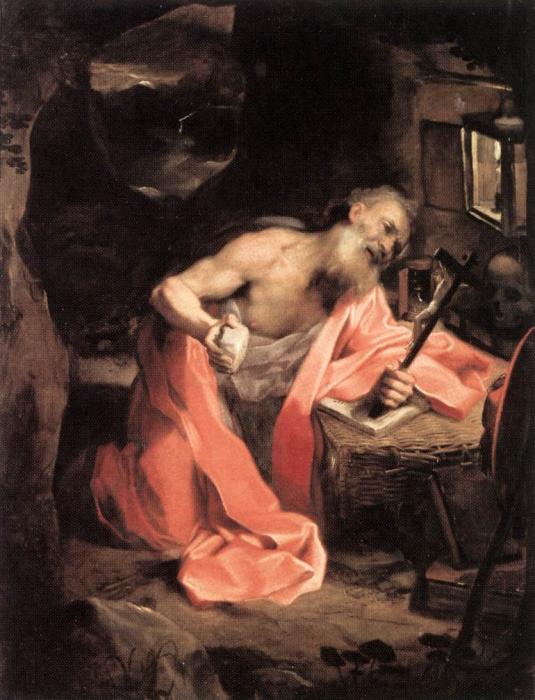
Barocci’s swirling composition and the focus on the emotional and spiritual are elements that foreshadow the Baroque of Rubens. But even in Federico’s Proto-Baroque Beata Michelina can see the makings of Bernini’s High Baroque masterpiece Ecstasy of St Theresa.
